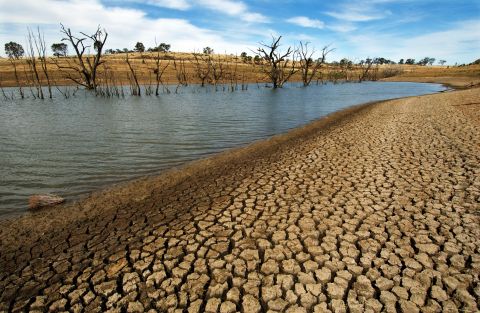
What is drought
Victoria’s climate is highly variable, but over recent decades it is becoming warmer and drier.
Droughts occur when an area or region experiences below normal precipitation (rainfall or snow) over a period. As the nature of drought conditions change over a period, it can be difficult to determine exactly when a drought starts and finishes. Droughts can last for weeks, months or years.
Impacts of drought
Inadequate precipitation can reduce soil moisture, groundwater, and streamflow. The physical impacts of drought include crop damage and general water shortage. Streamflow reduction can impact flora and fauna. Where some waters become completely dry, any local populations relying on these conditions may become extinct.
The impacts for people during drought can be far reaching as water is essential for life. Crop farmers must irrigate or face crop failure. However, water is not always available for irrigation. Crop losses can reduce food availability and impact food prices. Drinking water supplies can change in quality. Water restrictions may be required to ensure adequate volumes remain to support populations.
The Millennium Drought
Victoria experienced a major drought between 1996 and 2010. This was known as the Millennium Drought. During this time over half of Victoria’s catchments had declines in annual streamflow of 20-40%. Water restrictions were applied by various water corporations across the state. Permanent water savings measures were also introduced to better manage this resource.
Lake Eppalock in droughtReviewed 11 June 2024

